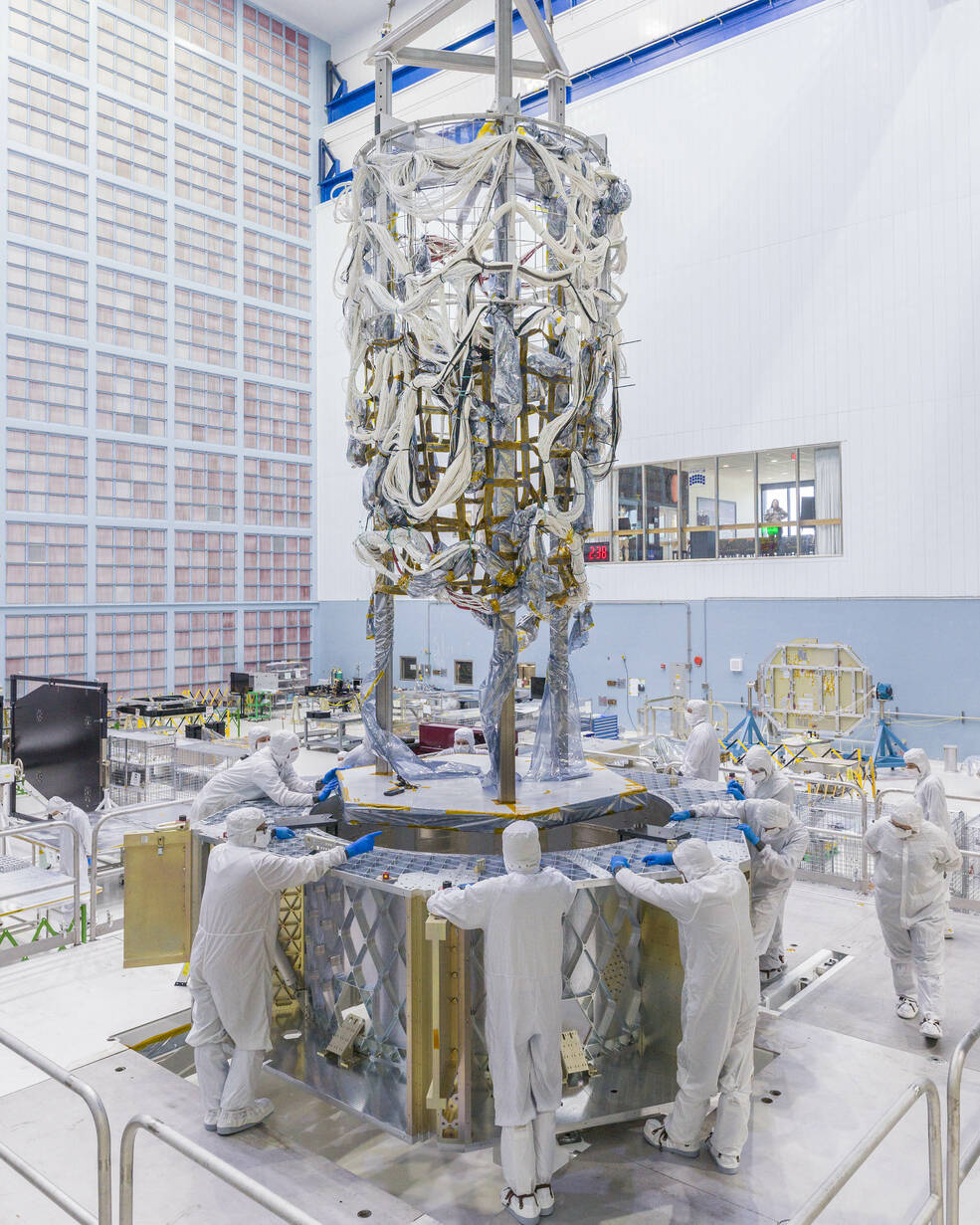NASA’s Nancy Grace Roman Space Telescope team has begun integrating and testing the spacecraft’s electrical cabling, or harness, which enables different parts of the observatory to communicate with one another. Additionally, the harness provides power and helps the central computer monitor the observatory’s function via an array of sensors. This brings the mission a step closer to surveying billions of cosmic objects and untangling mysteries like dark energy following its launch by May 2027.
“Just as the nervous system carries signals throughout the human body, Roman’s harness connects its components, providing both power and commands to each electronic box and instrument,” said Deneen Ferro, the Roman harness project development lead at NASA’s Goddard Space Flight Center in Greenbelt, Maryland. “Without a harness, there is no spacecraft.”
Weighing around 1,000 pounds, the harness is made up of approximately 32,000 wires and 900 connectors. If the wires were laid out end-to-end, they would span 45 miles. Directed upward, they would reach eight times higher than the peak of Mount Everest.
Achieving this milestone was no small task. Over the course of about two years, a team of 11 Goddard technicians spent time at the workbench and perched on ladders, cutting wire to length, meticulously cleaning each component, and repeatedly connecting everything together.
The entire harness was built on an observatory mock-up structure before being transported to Goddard’s Space Environment Simulator – a massive thermal vacuum chamber used in this case for “bakeout.” When observatories like Roman are sent to space, the resulting vacuum and orbital temperatures can cause certain materials to release harmful vapors, which can then condense within electronics and create problems like short circuits or deposits on sensitive optics, degrading the telescope’s performance. Bakeout releases these gases on Earth so they aren’t emitted inside the spacecraft when in space.
Now, engineers will weave the harness through the flight structure in Goddard’s big clean room. This ongoing process will continue until most of the spacecraft components are assembled. In the meantime, the Goddard team will soon begin installing electronics boxes that will eventually provide power via the harness to all the spacecraft’s science instruments.
For more information about the Roman Space Telescope visit: roman.gsfc.nasa.gov or www.nasa.gov/roman. To virtually tour an interactive version of the telescope, visit: https://roman.gsfc.nasa.gov/interactive/.
By Nora Lowe
NASA’s Goddard Space Flight Center, Greenbelt, Md.
Media Contact:
Claire Andreoli
NASA’s Goddard Space Flight Center
301-286-1940



























